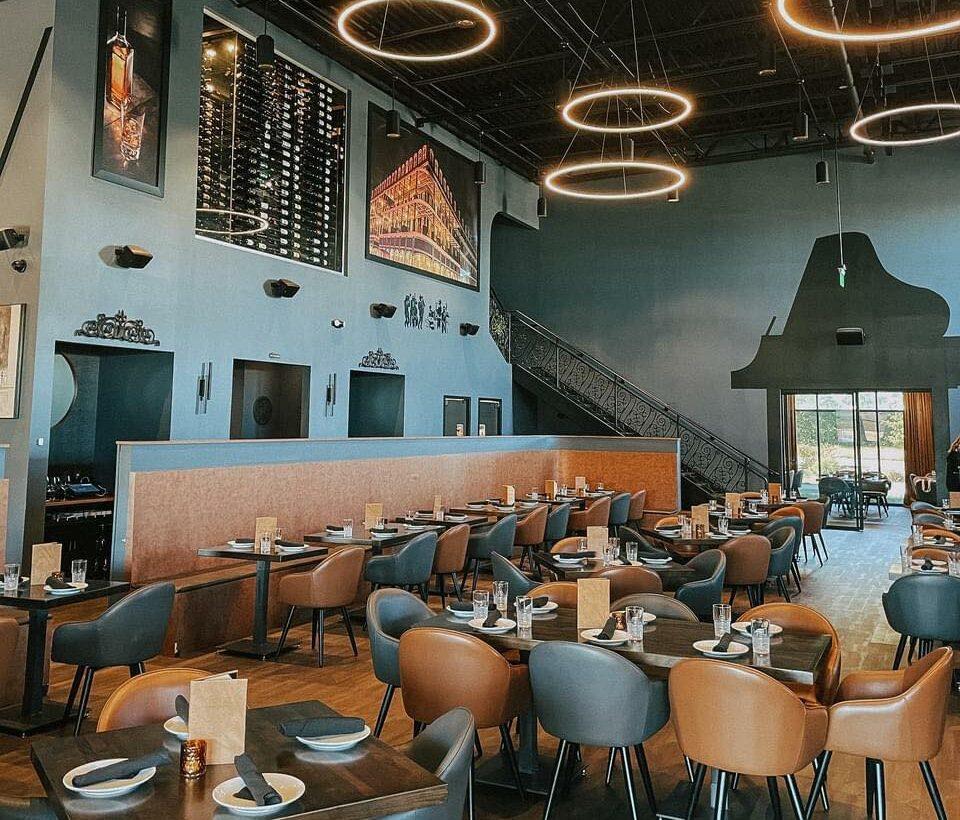Pan Asian Dining Islamabad: Savor Genuine Asian Meals
Pan Asian Dining Islamabad: Savor Genuine Asian Meals
Blog Article
Savor Authentic Oriental Cuisine With a Pan-Asian Twist for a Culinary Adventure
Embarking on a cooking journey with authentic Oriental food, improved with a Pan-Asian twist, offers a distinct possibility to explore the abundant tapestry of flavors that specify the region's varied culinary traditions. As you contemplate these enticing dishes, think about the cultural narratives and historical influences that form them, each bite supplying a tale waiting to be found. Fine dining experience Islamabad.

Discovering Pan-Asian Tastes
In the world of worldwide gastronomy, Pan-Asian cuisine stands out for its impressive diversity and the unified interaction of flavors from numerous Asian societies. This culinary technique commemorates the rich customs and unique active ingredients located across the continent, producing a tapestry of tastes that is both enjoyable and interesting. Key to Pan-Asian cuisine is its ability to stabilize different tastes-- pleasant, salted, spicy, and sour-- while highlighting the freshness and top quality of each ingredient.
From the umami-rich soy sauce of Japan to the intense chili peppers of Thailand, Pan-Asian cuisine uses a considerable palette of flavors. These elements are usually combined in creative ways, enhancing meals with layers of intricacy. For example, the usage of aromatic herbs such as lemongrass and cilantro, common in Vietnamese and Thai food, includes a refreshing illumination to meals, while the consolidation of coconut milk delivers a velvety, rich structure.
The focus on fresh fruit and vegetables and fragrant spices ensures that each meal is not just a feast for the preference buds yet also for the senses. Pan-Asian cuisine welcomes diners to embark on a cooking trip, discovering the large and differed landscapes of Asian gastronomy with every bite.
Combination Meals to Try
While Pan-Asian food is commemorated for its standard tastes, the modern-day cooking landscape is increasingly welcoming blend meals that mix these traditional components with influences from other areas. This ingenious strategy not only honors the abundant heritage of Asian cookeries however also presents novel preference experiences that appeal to contemporary tastes.
An archetype of such a fusion recipe is the Korean-Mexican taco, where marinaded bulgogi beef is covered in a warm tortilla, covered with kimchi and a hot gochujang-infused salsa. This mix marries the strong, tasty flavors of Korea with the dynamic, fresh components of Mexican cuisine. Likewise, sushi burritos have acquired popularity, joining together the delicate virtuosity of Japanese sushi with the passionate, hand-held convenience of a burrito, typically including blend components like tempura shrimp and avocado with a drizzle of wasabi mayo.
An additional noteworthy meal is Thai curry ramen, which infuses the velvety, fragrant flavors of Thai curry into the calming broth of standard Japanese ramen, developing an unified blend that tantalizes the senses. These blend dishes extend past simple uniqueness; they stand for a culinary discussion in between societies, urging expedition and technology worldwide of Pan-Asian cuisine.
Important Components and Spices
To absolutely appreciate Pan-Asian food, one need to recognize the necessary active ingredients and flavors that develop its foundation. This diverse culinary style attracts from a rich tapestry of Eastern practices, employing a harmonious mix of textures and tastes. Key components consist of soy sauce, fish sauce, and oyster sauce, which present a tasty umami deepness important to Oriental meals. Complementary to these are rice vinegar and mirin, lending a fragile acidity and sweet taste.
Fragrant aspects are crucial, with lemongrass, ginger, and garlic being common across various Pan-Asian dishes. These active check this ingredients give a fragrant base that improves the complexity of flavors. Seasonings such as celebrity anise, cardamom, and cinnamon present warmth and character, resembling impacts from areas like China and India.

Cooking Methods and Tips
Mastering the art of Pan-Asian cuisine requires familiarity with its distinct cooking methods, each adding to the lively tapestry of flavors this cooking tradition is commemorated for. Central to these techniques is the stir-fry, a quick cooking strategy that maintains the dietary integrity and dazzling colors of active ingredients. Utilizing a wok, the stir-fry method permits also warm circulation, vital for attaining the particular appearance and taste equilibrium of Pan-Asian meals.
One more essential technique is steaming, especially widespread in Chinese cuisine. This gentle approach keeps the natural tastes and nutrients of ingredients, making it ideal for seafood and veggies. Dumplings, a beloved staple, often take advantage of steaming, causing soft, succulent textures.
Cooking, additionally integral, passes on great smoky depths to recipes such as Oriental bulgogi or Japanese yakitori (pan asian dining Islamabad). This method commonly involves marinating components, allowing flavors to pass through deeply prior to food preparation over an open fire or warm plate
Finally, mastering the art of balancing tastes-- pleasant, sour, salty, bitter, and umami-- is important. Properly layering these components can raise a dish from common to amazing, providing a complicated and satisfying culinary experience that embodies the essence of Pan-Asian cuisine.
Dining Experiences Worldwide
Across the globe, Pan-Asian food offers an unrivaled eating experience, celebrated official statement for its rich tapestry of tastes and lively discussions. This culinary phenomenon has transcended social limits, capturing the hearts and tastes of food enthusiasts worldwide. In worldwide cities like New York, London, and Sydney, Pan-Asian dining establishments function as fusions where cooking traditions from Thailand, Japan, China, and past assemble, giving diners with an eclectic mix of dishes that highlight the area's diversity.
The global appeal of Pan-Asian cuisine exists in its capacity to offer both credibility and development. Cooks skillfully wed conventional components such as lemongrass, soy sauce, and miso with contemporary strategies, leading to dishes that are both familiar and refreshingly brand-new. This blend permits restaurants to start a culinary trip that values heritage while accepting modernity.
Furthermore, eating experiences are elevated via thoughtfully developed atmospheres that mirror the principles of Pan-Asian aesthetic appeals. From minimal Japanese-inspired interiors to vibrant Thai-themed spaces, each dining establishment supplies an unique ambiance that enhances the culinary offerings. Consequently, clients are not merely consuming a meal but partaking in a cultural experience, making Pan-Asian dining a really international phenomenon.
Verdict
The expedition of Pan-Asian food provides an extensive understanding of the intricate interplay of flavors and cooking traditions across Asia. By embracing combination recipes such as Thai curry ramen and sushi burritos, the cooking trip not just highlights the adaptability of typical active ingredients but also showcases her explanation ingenious modern strategies. This gastronomic journey, enhanced by essential flavors and cooking techniques, gives a distinct possibility to appreciate the multiculturalism and culinary artistry that specify Pan-Asian cuisine on a worldwide scale.
Beginning on a cooking trip through genuine Asian food, enhanced with a Pan-Asian spin, offers a special opportunity to explore the abundant tapestry of flavors that define the region's varied culinary traditions.In the world of global gastronomy, Pan-Asian food stands out for its impressive variety and the unified interaction of flavors from numerous Eastern societies. Key to Pan-Asian cuisine is its capability to balance contrasting tastes-- pleasant, salted, spicy, and sour-- while highlighting the freshness and high quality of each active ingredient.

Report this page